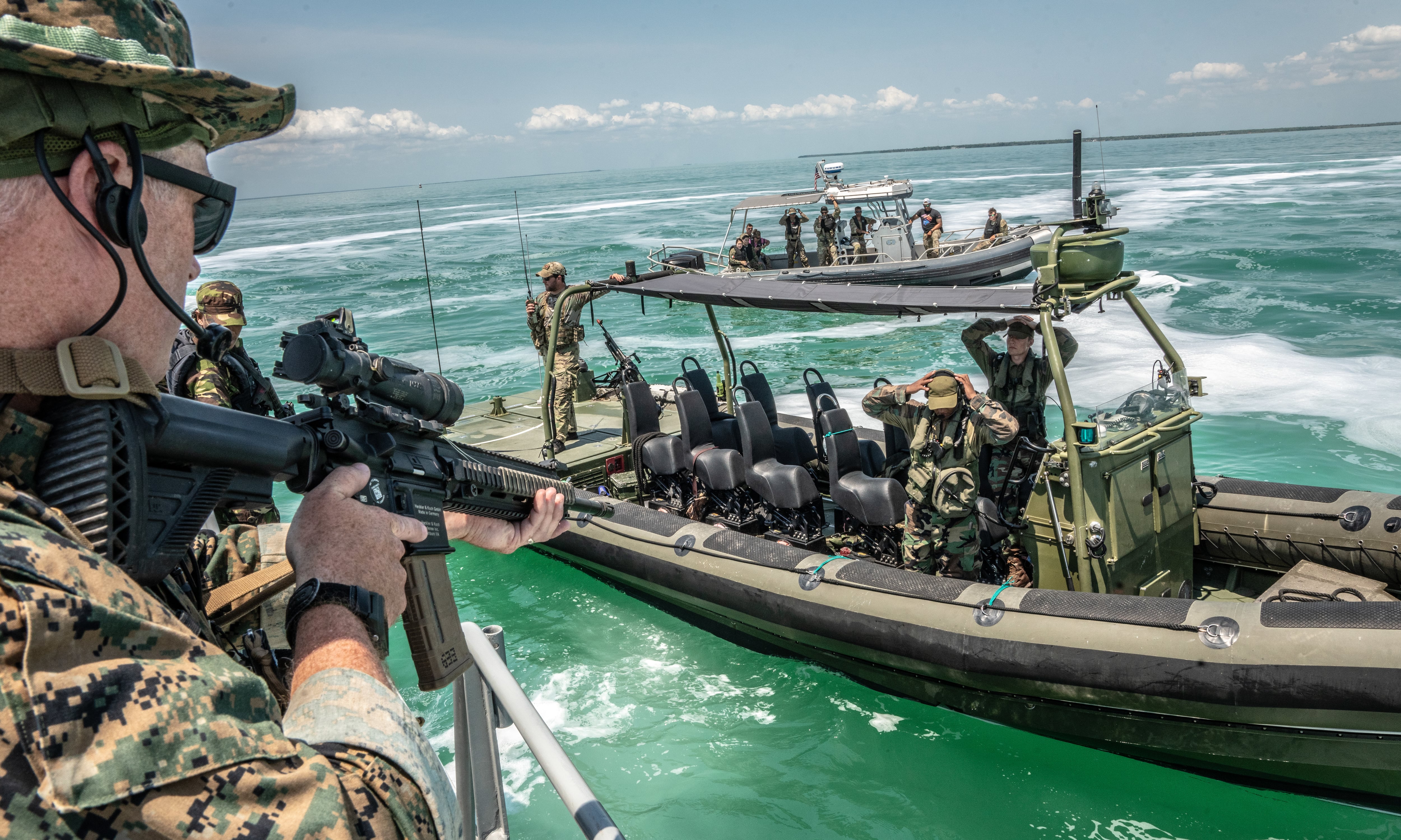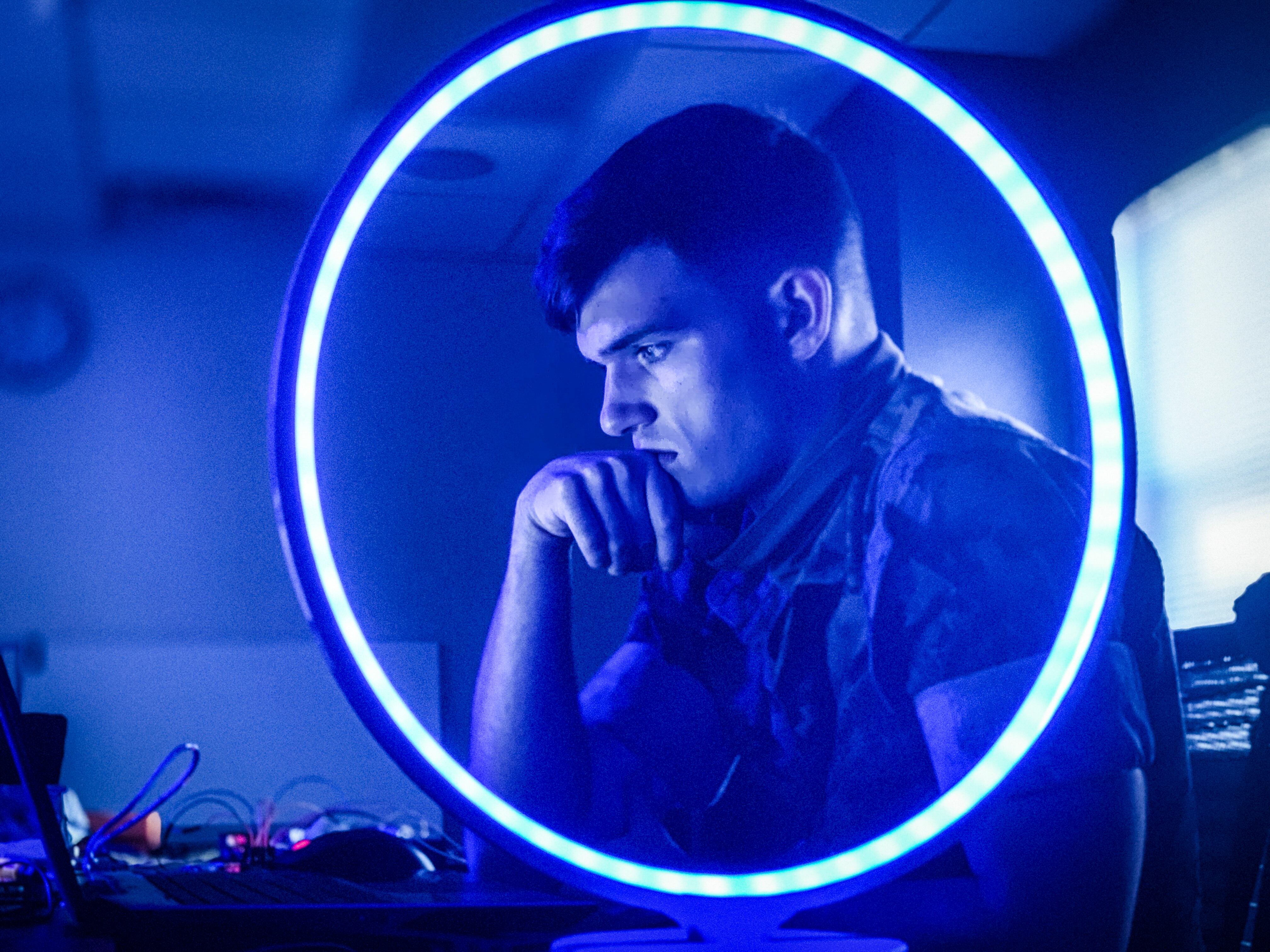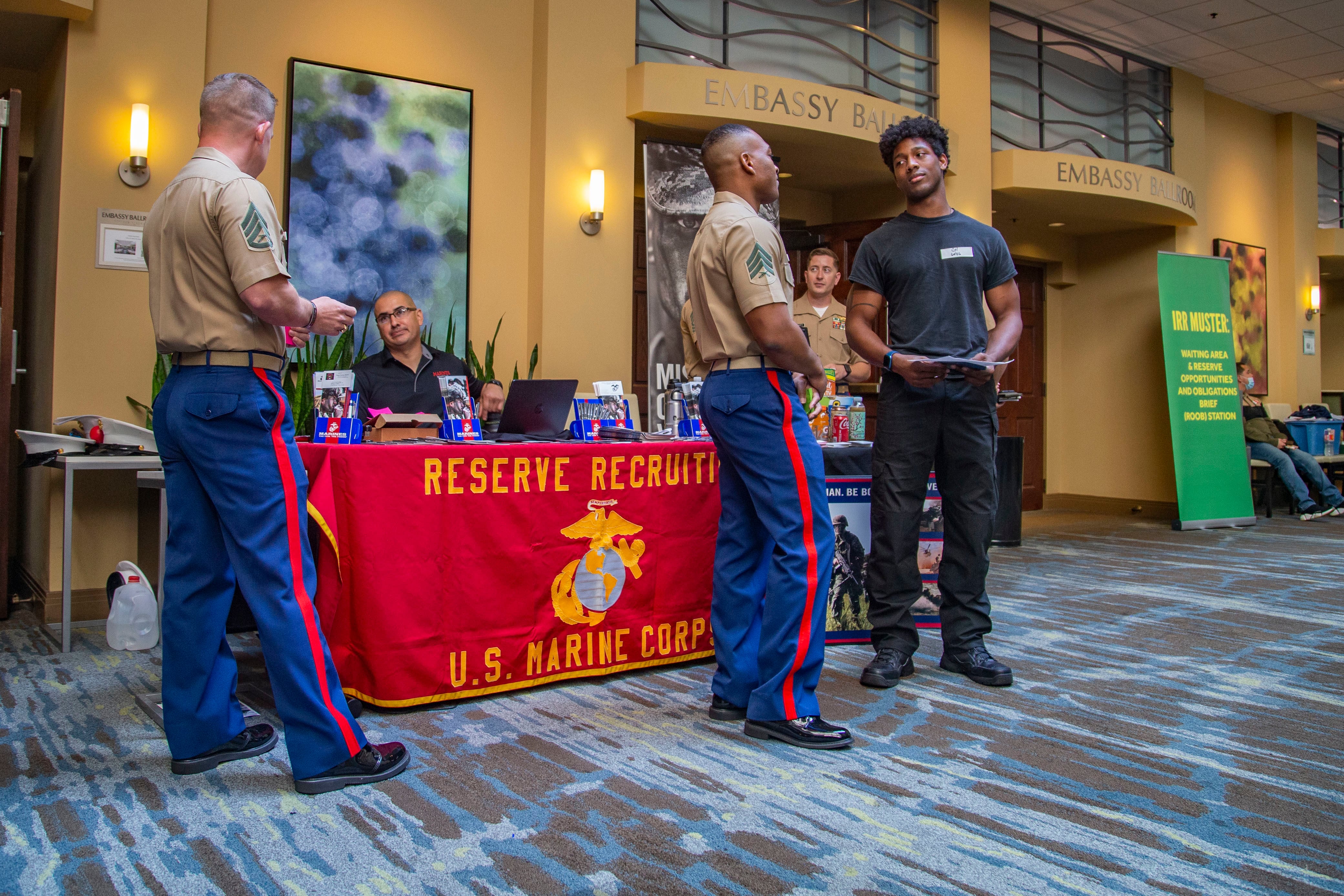Marine reservists face changes to their service that open new jobs, missions, deployments and key positions influencing the future of the Corps.
With those opportunities also come new demands on the military’s smallest reserve force.
Recent development and future Marine Corps Forces Reserve use marks a stark contrast to how leadership traditionally employed the Devil Dogs. Though they’ve had their fair share of combat and call-ups, they’ve mostly acted as a mirror image of the active side or as a fill-in supplier of bodies for the needs of the Corps.
That approach still has its place.
When commanders of any service or region need a job done, the Corps will deliver ready Marines, regardless of active or reserve status.
Marine reservists must continue to meet the high standard of basic military tasks and jobs, but instead of waiting on the sidelines for the call, they’re in the mix now.
“You have a very high chance of deploying in a number of different ways,” said Lt. Gen. David Bellon, Marine Corps Forces Reserve commander.
Hovering at about 35,000 uniformed Marines with another 60,000 in a ready reserve status, the force is the smallest of the reserve or Guard components.
It’s also now where Marine leaders look to retain talent they can’t keep in the active ranks, cover a vital but overlooked combatant command, find innovative talent to solve vexing technology problems and send Marines across the globe as the total Corps transforms for future warfare.
Reservists must do all of that and hold down a day job.
Another way to serve
Sgt. Caleb Hall did his time on active duty, working in intelligence with an Iraq tour. His next set of orders was to Okinawa, Japan.
His wife said, “No way.” The family needed a pause.
The rare kind of Marine who reads the Marine administrative messages, Hall spotted something one day he’d not heard of before, the “direct affiliation program.”
A 2019 Center for Naval Analyses on the recruiting program showed that linking active-duty Marines with the Reserve while they still served scored the highest retention rates.
Sgt. Zonia Kotaro had a good first enlistment, driving trucks and getting stationed in Okinawa, Japan, and Camp Pendleton, California. She wanted to reenlist, but the Corps declined her package.
She shrugged. It was a good ride.
Months later, now a civilian but still on the Individual Ready Reserve roster, she opened a letter. The missive asked her to attend a “muster.”
“When I was in, I did not know anything about IRR,” she said. “I just know I’ll be on standby. I knew it was a reserve status.”
It wasn’t an activation; the muster was more like a job fair — a chance to get back in uniform on her terms.
Both Hall and Kotaro found their way into the reserves through the two programs and continue to serve today.
The two reservists show how the Corps is trying to shed its “recruit and replace” personnel model to a “retain and invest” approach.
The reserves now offer an off ramp from active duty that can become an on ramp to a different kind of service or even back to active, as Commandant Gen. David Berger has dubbed it, the “permeability” of the active and reserve sides moving forward.
And those efforts are tapping Marines on the fence about going reserve or leaving the military behind entirely to those packing up their blues for Army green.
An Army National Guard program targets Marines for enlistment.
RELATED

There are 4,400 Marine veterans serving among 336,000 Army National Guardsmen, said Wayne Hall, Guard spokesman.
The number seems small, but the Corps must recruit nearly 30,000 new Marines every year to maintain end strength. The Guard scooped up Marine veterans for decades but established its direct Marine recruiting program in 2018 called “Marine to Guard,” Hall said.
That program yielded nearly 1,000 Marines turned Guardsmen since 2019, according to Guard data.
To avoid what Marine career planners see as poaching their highly qualified but finished-with-active-service Leathernecks, officials pitch Marines on the direct affiliation program.
They started the musters, such as the one Kotaro attended, to showcase what the Reserve side has to offer.
Out of about 60,000 Marines in IRR status each year, up to 7,000 attend the in-person musters, another 30,000 to 40,000 are done via a “phone muster,” where a liaison calls to check status and share information, said Col. William Chairsell, director of Marine Corps Individual Reserve Support Activity.
Marines arrived at musters Chairsell attended clopping along in flip flops, sporting long hair and anything but a regulation shave.
That’s okay.
“We’re not going to knife hand you or anything else,” Chairsell said.
With IRR service there’s no obligation. Marines can drill without adding to their original contract. That changes if they seek a job change or take on more extensive training.
Marines can retire from the IRR simply by staying in that status until they reach the retirement time obligation. Each year in the IRR provides 15 membership points toward retirement. With another 35 points on the table for drills, reservists can rack up their annual requirement of 50 points.
If Marine career planners wait too long, and the Marine hits the IRR or gets out completely, it can be a struggle to bring the person back.
“Once you close that door, it could close for life,” Hall said. “Keep that door open if needed, wanted in the future.”
Marines in Latin America
In 2021, reservists and their top boss took over from active duty the mission of sending troops to U.S. Southern Command — the Caribbean and everything south of Mexico.
That three-star general said the new mission gives reservists an area for experimentation, training and deployments.
“We have access to a Geographic Combatant Command that is maritime largely and has a lot of the same problem sets we’re trying to solve in other parts of the world,” Bellon said.
But a trip to Latin America isn’t all about playing beach volleyball and chugging cold beer. Southern Command might not be Afghanistan or Ukraine, but Chinese and Russian agents are wedging themselves into the theater, enticing nations with infrastructure, technology and military aid.
Marines have a chance to counter that in the “gray zone,” said Col. Brian Ecarius, assistant chief of staff G-5, for Marine Forces South.
From 2014–2021, the Corps had a dedicated Special Purpose Marine Air-Ground Task Force to Southern Command. Then leadership ended that mission shortly after announcing that Marine Forces Reserve would cover the area for the Corps.
That’s when Marine Forces South fell under Bellon, a three-star general instead of the former one-star command.
Those extra stars and a dual-hatted commander help the Reserve have an advocate at the highest levels, Ecarius said.
Whomever holds that billet has an “active interest” in the readiness of reservists serving in that mission.
And that, Ecarius said, gives reservists more of an “operational mindset.”
Maj. Travis Bowden deployed for UNITAS 2021, primarily in Peru. It is the oldest ongoing military exercise for the United States, first held in the 1950s.
“What UNITAS provided me was firsthand experience of how a MAGTF operates in the sea, on the deck the impact Marines can have,” Bowden said.
That’s hard to fit in landlocked, stateside reserve training centers.
It’s a maritime theater, a kind of mini-Pacific. That gives Marines ways to work the water and every other environment — desert, jungle, urban — with partners, intelligence agencies, the Department of State, the U.S. Navy and Coast Guard.
“A big piece in there is ‘readiness return,’” Ecarius said. “We’re very conscious of the employment of military forces either in contact or getting ready for contact. And when we’re training, we’re looking for readiness.”
Much of Southern command is in the same time zone as where many drilling reservists live. That allows them to pack up, deploy, train and head home quickly. Time is a premium for limited reserve drilling periods.
That kind of rapid movement is a skill all on its own.
Gunnery Sgt. Julio Castellanos spent most of his 18 years hitting Middle East deployments as an infantryman.
Then, in 2017, he became the Marine liaison at a Colombian training base. He’s now in Florida, serving as the theater security cooperation branch chief for Marine Forces South.
Castellanos saw real competency in his Colombian counterparts.
“A lot of these countries have had internal conflict and they’re good at what they do,” he said.
In other areas, such as small unit tactics, the partner forces have had to adapt. They might not have drones or precision fires. Meaning, they get the job done with even less than Marines have on hand.
“If an opportunity ever comes up to do any kind of training, exchange of information, subject matter exchange, there’s a lot to learn from our partner forces down South,” he said.
Marine Innovation Unit
Jarheads can claim another first along with their fighting motto — they’re the first military branch to establish a service-level innovation unit in New York.
The Marine Innovation Unit is being set up in Newburgh, New York. That chess move is part of a strategy to land in the center of heavy technology and investment corridors smack in between New York City and the state’s capital, Albany.
For years, top Marine leaders pointed to critical technology skills such as cyber, automation, machine learning and quantum computing as vital tools for future war.
But training uniformed personnel in any branch in these areas usually means they’re leaving the service soon for lucrative jobs in Silicon Valley or on Wall Street.
Can the Corps have it both ways?
That’s the question MIU might answer. Early results are promising.
RELATED

Marine Corps Force Design 2030′s annual update released in May noted Marine Innovation Unit will partner with Marine Corps Warfighting Lab to identify problems, gaps, critical solutions needed by the service. That also means connecting with academia, industry, special operations units and other service’s science and technology labs.
“Marine reservists are involved in some of the higher end, most classified programs we have and they’re leading because of their backgrounds,” Bellon said. “You have a constellation of threats that are out there moving, that requires cutting edge, total domain awareness.”
The service needs a unit focused on finding fixes to meet evolving hazards the operational force faces, said Col. Matthew Swindle, MIU commander.
In January, they advertised jobs in the unit.
“The output was dramatic,” Swindle said. “In the first week alone, we had 300 applications for 100 open slots.”
Since then, it has received nearly 975 applications.
The Marine Innovation Unit will hit 125 total members by the end of September, he said. When Oct. 1 arrives, another 140 spots should open.
The current plan calls for a total of 380 billets for Marine Innovation Unit by the end of fiscal year 2024.
An MIU posting means a three-year commitment for most, Swindle said. And a successful tour there could set up a reservist for a choice job or command position if they continue their career.
Those selected will work, often remotely, on problems in at least one of these key areas: artificial intelligence, data science, human systems, advanced manufacturing, quantum computing, autonomy/robotics, space, supply chain management, cyber, synthetic biology, energy and materials science.
Campaign plan
As the Corps trims its active personnel to pre-9/11 end strength and adds tech to push decision-making and firepower to the lowest levels, it will need the Reserve more than ever.
The broad strokes of that future reside in the Marine Corps Forces Reserve Campaign Plan, released in 2021.
“The commandant has ordered the II Marine Expeditionary Force commander and myself to design a capability set and build a future force that can respond more holistically to global contingencies,” Bellon said.
This means reservists will be on deck for deployments anywhere, but they might deploy in units or methods different than in the past.
RELATED

And some of the work may reside only in the Reserve. That includes the only Marine law enforcement units, half of the Corps rocket artillery and reserve aviation units integrating with at least one active-duty Marine air wing.
Previously, individual reservists or even whole units deployed within larger active-duty formations.
But with nonstandard deployments, the Reserve sometimes saw a “lag response” when fitting the reserve unit to the mission.
The campaign plan and new focus hit the problem ahead of time.
“We’re now proactively looking at ways to modify the reserves, in advance,” Bellon said.
That’s a change for both the active side’s use of the reserves and for the reserve planners.
Gerald Ormerod, a retired Marine lieutenant colonel who now serves as the Reserve assistant chief of staff for capabilities and requirements, has seen Marine Reserve employment for the past two decades firsthand.
The new campaign plan shifted old patterns.
“Prior plans were force structure reviews, basically moving capabilities around the portfolio,” Ormerod said. Force design applied to the reserves structure, “is almost like a rewrite approach to the named threat, the (People’s Republic of China).”
Col. Andrew Shriver, Marine Forces Reserve assistant chief of staff for capabilities and requirements, G-8, said the force currently validates and refines capabilities only it possesses or can add to an active force burdened with more operational commitments.
Law enforcement and rocket artillery are two examples, as previously mentioned. But they also bring personnel retrieval and processing, Marine advisors, aviation command and control and logistics augmentation and airborne capable air naval gunfire liaison company units.
“I think today and looking forward you can speak to a much more diverse set of opportunities that are available to the reserve component,” Shriver said.
Todd South has written about crime, courts, government and the military for multiple publications since 2004 and was named a 2014 Pulitzer finalist for a co-written project on witness intimidation. Todd is a Marine veteran of the Iraq War.




